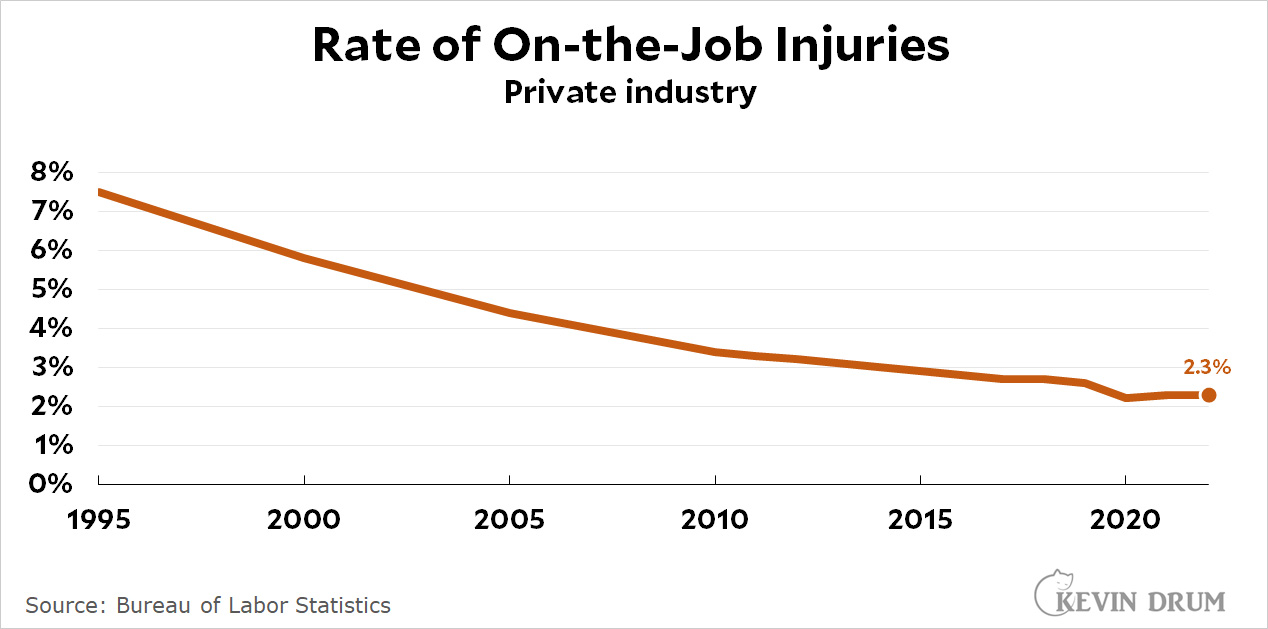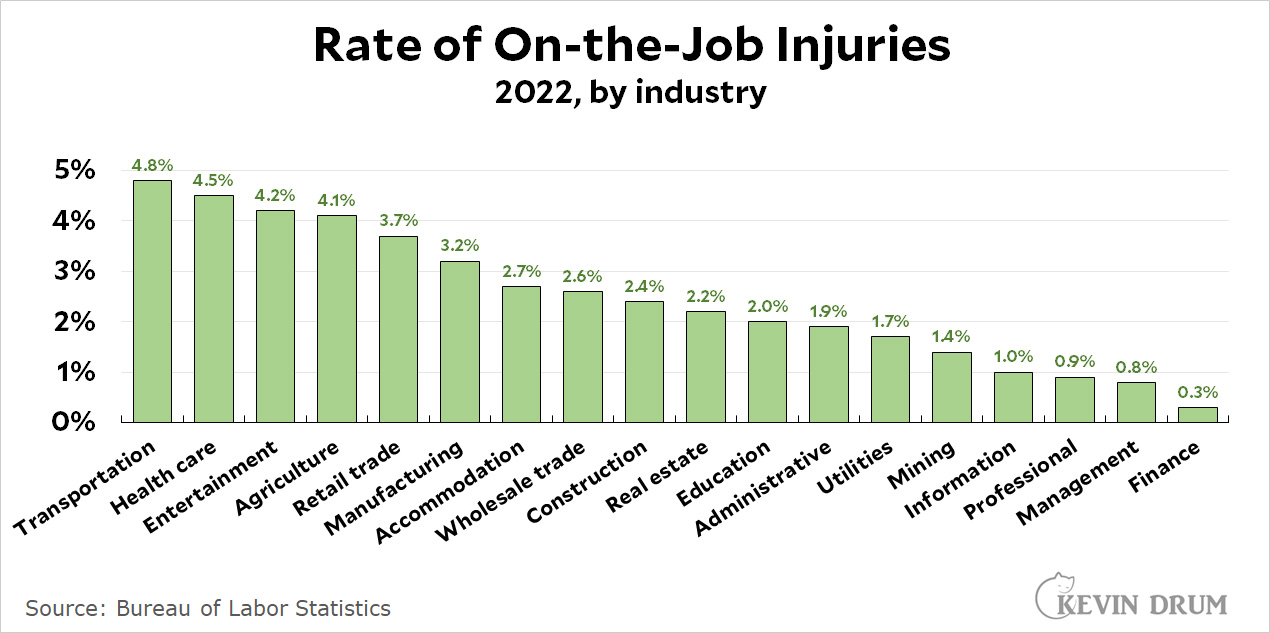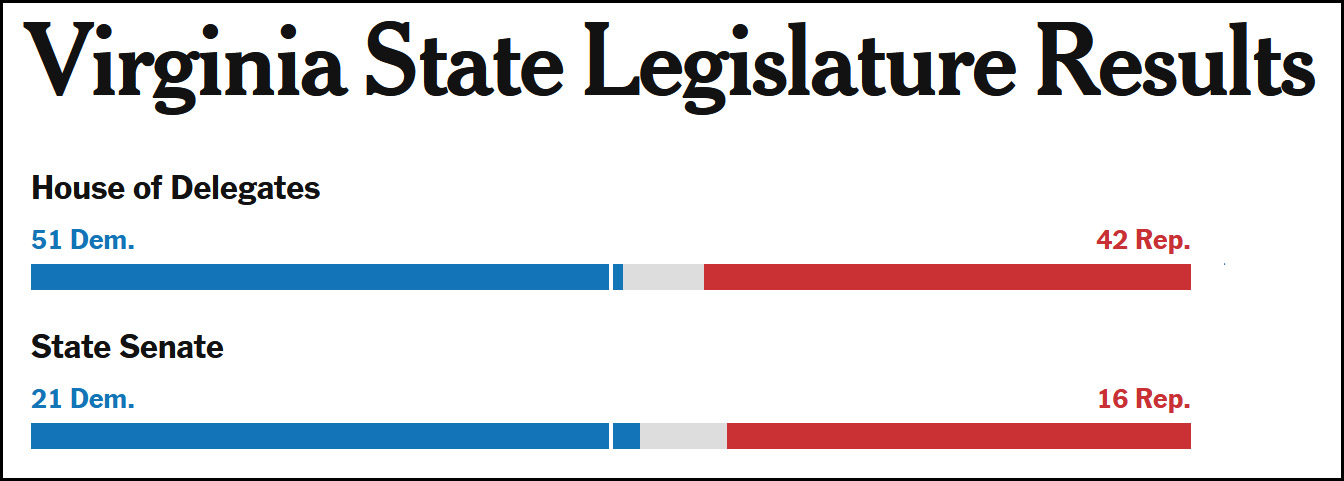Ohio, these days, is a solidly red state. And yet, yesterday Ohioans went to the polls and approved an abortion rights initiative by 57-43%. What gives?
The answer is simple, but maybe not obvious. Last year Ohio passed a law (currently in court) that bans abortion after six weeks. This is effectively a complete abortion ban since most women barely even know they're pregnant by then—and it's very unpopular. Nationally, huge majorities think abortion should be legal during the first 13 weeks of pregnancy:
 This number might be a bit lower in Ohio, but I'll bet it's still well over half. This means Ohio voters had only two choices:
This number might be a bit lower in Ohio, but I'll bet it's still well over half. This means Ohio voters had only two choices:
- Abortion banned after 6 weeks (effectively a total ban)
- Abortion generally legal at all stages of pregnancy, but can be restricted after fetal viability
Many voters might not have thought either of these choices was ideal, but they still had to choose. And given these choices, they chose to make abortion generally legal.
If conservatives were willing to pass laws that banned abortion only after the first trimester, I'll bet they wouldn't be losing so many referendums. But they aren't. And they're learning, to their regret, that even fence-sitters prefer mostly legal to mostly banned.










